RGB controllers for LED strip
Sometimes it's not enough just to turn the light on or off, you want to control the brightness, change the color, get dynamic effects. This is what you need RGB LED strip controller. Controllers are different, simple and complex, but first things first.
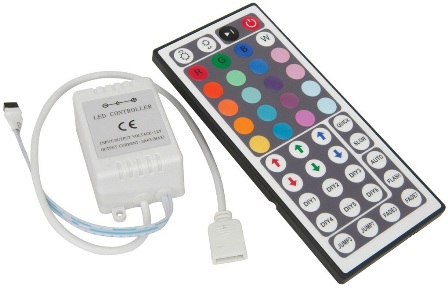
If you only need to adjust the brightness, then the LED strip dimmer will do the trick. A dimmer with direct mechanical control is simply placed on the wall or, if the control is carried out by the remote control, the control unit is installed in a special niche. Radio frequency control from the remote is more convenient, as it does not require pointing the remote control strictly at the receiver, and there is no need to lay additional wires in the wall. Dimmers are typically used to control individual lighting areas.
When you need to control several LED lighting zones from one remote control, for example lighting the ceiling, floor, curtains, then use one remote control and several dimmers programmed in the necessary way with the corresponding light zones.
The conventional dimmer used for an incandescent lamp is not suitable for powering LED strips, LEDs need PWM modulated, close to direct current, and a conventional thyristor dimmer can simply disable the LEDs.
More precise control of the light will allow the RGB controller of the three-color strip. It will not only provide a choice of colors, but also allow you to mix them, getting the desired shades. In such a controller, dimmer functions are initially included, and the user will no longer need to purchase a separate device to adjust the brightness.
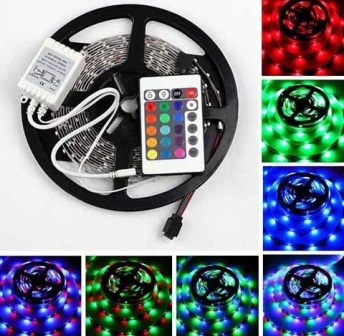
The RGB controller can smoothly change the light intensity and even create color and light effects. Some controllers have the ability to create programs. The controller can be equipped with wired or wireless control via IR or radio frequency remote control using the 1 to 10 volt protocol or digital DXM and DALI, to control several light zones.
When the strip contains red, green, blue and white, an RGB + W controller is used, it has not three, but four channels, since there is also white. MIX controllers will allow you to control many white strips where the white LEDs have different color temperatures and the hues can change from warm to cool.
Different digital protocols such as DXM and DALI allow more complex lighting effects. DXM can control up to 170 RGB and 512 white sources and WHETHER can be integrated into the Smart Home system and will allow you to control up to 64 light sources.
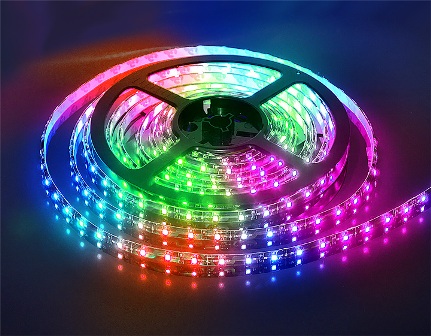
There are also traveling wave strip controllers that allow you to create real traveling strips.In them, as a rule, there are up to 100 preset programs for the effects of color change, brightness, its change and different speed of lights.
Pixel controllers are a separate class of RGB controllers. These controllers can separately control each LED in the corresponding RGB strip. Creating light panels, moving pictures — this is the main purpose of RGB pixel controllers. The user himself creates a program for such controllers using software, then transfers it to a memory card that is inserted into the controller. Many programs can be recorded on one memory card.
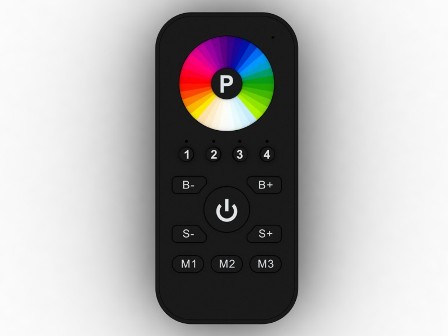
As for the RGB LED strip, such a multi-colored strip can change its color, shining with all the colors of the rainbow, and the number of possible shades is related precisely to the complexity of the controller. Usually, the apartment does not require very many shades, and a simple RGB controller with a remote control will do.
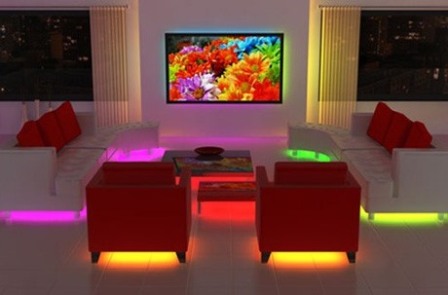
The multi-color buttons on the remote control are designed to control the RGB strip light color. A red button is red, a yellow button is yellow, etc. Depending on the controller, there can be many shades of color. If the controller has a dimming option, different lighting modes are possible, such as night light mode, bright light mode, calming mode, etc.
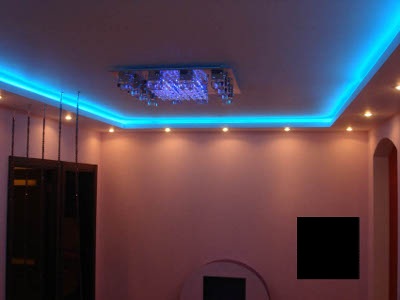
For those who have not yet understood how many shades are possible in the light of a three-color strip, we will give an explanation. An RGB LED has three transitions, giving three primary colors: red, green, and blue. Mixing light from three LEDs in different ratios adds up to different shades of light. It's actually three LED strips with three different colors in one strip.To control such a strip, you need an RGB controller. The four wires of the strip are connected to the corresponding connectors on the controller, and the controller is connected to a 12 or 24 volt DC power source, then the installation is done and that's it, the strip can be controlled by the remote control.
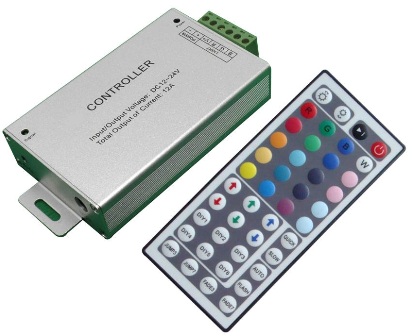
The infrared sensor or radio frequency sensor of the controller captures the signals from the remote control and transmits them to the controller, the controller in turn turns on the corresponding mode of operation of the LED RGB strip.
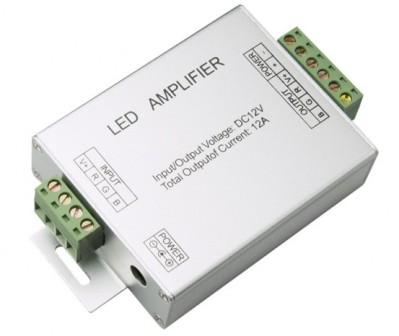
The power supply of the controller, like the controller itself, must match the power of the connected strip. If the strip's power exceeds the controller's allowable power, it will simply fail. If it is required to connect a strip with a length of more than 5 meters, an RGB amplifier is used, to which several strips fed in parallel are connected. The amplifier itself is powered by a separate power supply. It turns out an additional circuit power supply + RGB controller + RGB amplifier + RGB strips.
